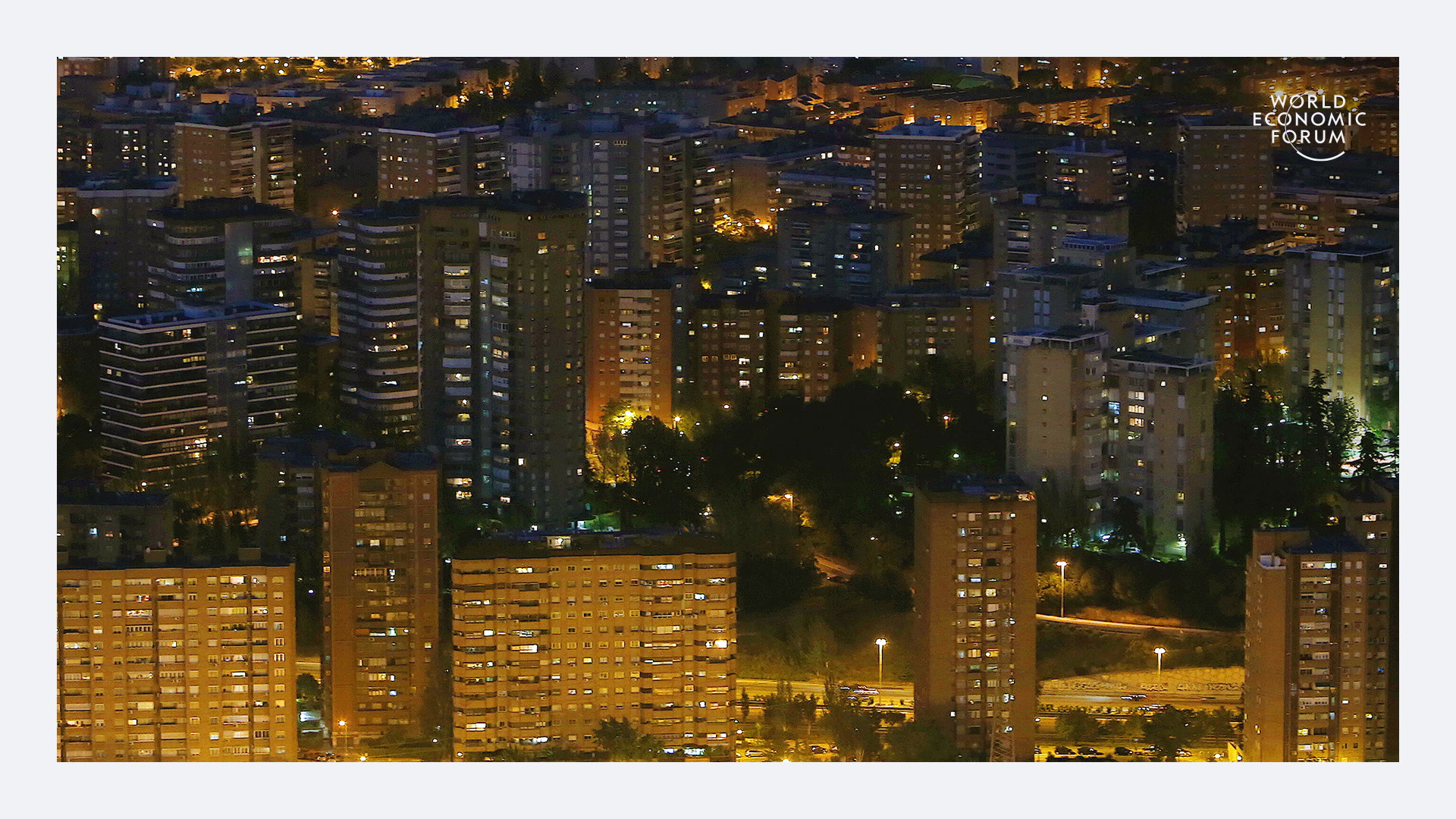Morocco is building a giant thermosolar farm in the Sahara Desert

Ouarzazate Solar Power Station, Morocco Image: REUTERS/Youssef Boudlal

Get involved with our crowdsourced digital platform to deliver impact at scale
Stay up to date:
Middle East and North Africa
An amazing transformation has taken place on the dunes below Morocco’s sun-blasted High Atlas mountains.
Against the yellow sand thousands of curved mirrors, each taller than a human, stand in rows. These are part of a solar-power generating plant called Noor or Ouarzazate Solar Power Station, which is rapidly changing how the whole continent produces its electricity.
The mirrors cover an area of roughly 1.4 million square metres. The first phase of this plant generated enough electricity to supply 650,000 people when it was switched on in 2016.
By 2020, or even sooner, the $9 billion solar power plant is expected to generate 580 megawatts (MW), enough electricity to power over a million homes.
Perhaps more importantly, the solar farm, near the city of Ouarzazate – known as the gateway to the desert – could also be the doorway to a new era of cleaner energy production in Africa.
Ouarzazate Solar Power Station, Morocco

Symbolically, the name of the plant – Noor – is an Arabic word meaning “light” and its success could mark the dawn of a new industry for a country that until recently imported 97% of its energy needs.
In the very near future, Morocco aims to become an exporter of power supplies to Europe, as well as to elsewhere on the African continent and the wider Arab-speaking world.
Follow the sun
The Noor solar panels make a humming noise as they move to track the sun, which shines for up to 3,600 hours a year in the desert, giving Morocco one of the world’s highest levels of solar power potential.
Noor 1, the first phase built at Ouarzazate, provides 160 MW of the ultimate 580 MW capacity and has already reduced Morocco’s carbon emissions by hundreds of thousands of tonnes a year, its designers say.
A further three phases of the Ouarzazate Solar Power Station project are expected to be up and running by the middle of 2018, Mustapha Bakkoury, head of the Moroccan Agency for Sustainable Energy, said in February.
Morocco plans to generate 42% of its energy from renewables by 2020, rising to 52% by 2030, with solar, wind and hydropower each providing a third of the total.

The country is well on its way to achieving that goal. Renewable energy was already supplying 34% of the kingdom's electric power production by the end of 2017, according to the government.
Storing the power
The Ouarzazate Solar Power Station site has used innovative methods to generate and store the sun’s rays, particularly the latest developments in concentrated solar power.
The humming, tracking mirrors of the first two phases concentrate the sun’s rays onto a synthetic oil that runs through pipes and heats it to 350°C (662°F), creating water vapour that drives a turbine-powered generator. This is similar to the way fossil fuels are used to generate electricity but replaces the carbon dioxide-making fuels with sunlight as the power source.
But Noor 3 will consist of a single large tower surrounded by about seven thousand flat mirrors that will track and reflect the sun’s rays towards a receiver at its pinnacle.
Molten salts inside the tower will capture and store the heat, so there will be no need for the synthetic oil. Experts say this is a more efficient way to store the energy of the sun’s heat and needs much less space than the current arrays of mirrors.
Peak demand is reached after the sun has set, and phases 1 and 2 store some of the energy in molten sands. These can keep producing power for up to three hours.
However, the storage capacity in later phases is expected to rise to between seven and eight hours after sundown.

A bright future
The construction of solar capacity on such a large scale could have important implications for the future of power generation on the continent as a whole, according to one of Noor’s biggest backers.
Mafalda Duarte, the manager of Climate Investment Funds (CIF), told The Guardian in 2016 that: “Morocco is showing real leadership and bringing the cost of the technology down in the process.”
Other investors in the Ouarzazate solar complex include German investment bank KfW, the African Development Bank, the World Bank and the European Investment Bank (EIB).
The EIB is the European Union’s infrastructure investment arm and its backing of the Ouarzazate Solar Power Station project, which by some estimates represents up to 60% of its value, reflects hopes in both Morocco and the EU that the power will flow beyond Morocco’s borders.
Meanwhile, across the continent, countries including Ghana, the Democratic Republic of Congo, Rwanda and South Africa are investing in solar power projects that produce cleaner electricity than fossil fuels, increase energy security and will provide reliable sources of light and heat to many for the first time.
This article has been updated to correct an error regarding the area covered by the solar plant.
Don't miss any update on this topic
Create a free account and access your personalized content collection with our latest publications and analyses.
License and Republishing
World Economic Forum articles may be republished in accordance with the Creative Commons Attribution-NonCommercial-NoDerivatives 4.0 International Public License, and in accordance with our Terms of Use.
The views expressed in this article are those of the author alone and not the World Economic Forum.
Related topics:
The Agenda Weekly
A weekly update of the most important issues driving the global agenda
You can unsubscribe at any time using the link in our emails. For more details, review our privacy policy.
More on Energy TransitionSee all
Robin Pomeroy and Sophia Akram
April 26, 2024
Liam Coleman
April 25, 2024
Tarek Sultan
April 24, 2024
Jennifer Holmgren
April 23, 2024






